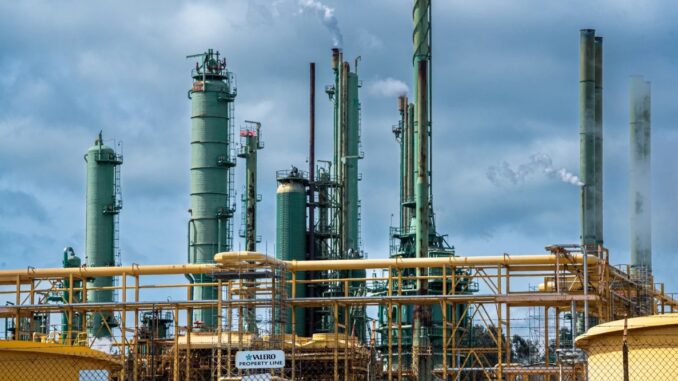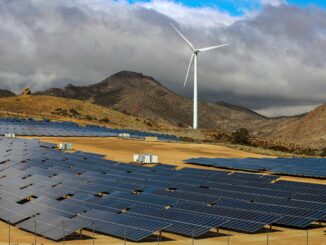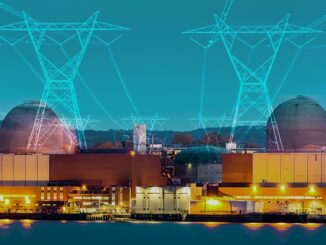
In a move that underscores the relentless squeeze on California’s fossil fuel industry, Valero Energy has confirmed it will proceed with shutting down its Benicia refinery by April 2026, despite last-ditch negotiations with state officials.
The 145,000-barrel-per-day facility, a cornerstone of West Coast refining since 1968, falls victim to what Valero cites as an unforgiving regulatory thicket and escalating operational costs—hallmarks of Governor Gavin Newsom’s aggressive push toward net-zero emissions by 2045.
This isn’t just another closure; it’s the latest chapter in a saga where Newsom’s policies have slashed the state’s oil and gas sector to a shadow of its former self, trading energy security for virtue-signaling headlines. Just days before Valero’s announcement, the Santa Barbara County Board of Supervisors convened on October 21, 2025, to deliberate Item #3: a “Framework, Approach, and Budget to Phaseout Oil and Gas Operations.”
The meeting, captured in stark detail by local observers, featured a parade of environmental activists from groups like the Sierra Club and the Center for Race, Poverty & the Environment (CFROG), advocating for an end to local extraction. But it was a two-minute testimony from geologist and energy advocate Mike Umbro that stole the show—and exposed the hypocrisy at the heart of California’s green crusade.
The Valero Verdict: Regulatory Stranglehold Meets Economic Reality
Valero’s Benicia plant doesn’t shutter in a vacuum. Earlier this year, in a rare moment of pragmatism, Newsom’s administration scrambled to broker a deal, even floating hundreds of millions in taxpayer funds to subsidize maintenance and keep the lights on.
Talks collapsed, leaving the refinery’s fate sealed amid fines exceeding $82 million for air pollution violations and a business climate decried by industry leaders as “hostile.”
When paired with Phillips 66’s impending closure of its 139,000 bpd Los Angeles refinery by early 2026, California stands to lose 17-20% of its refining capacity overnight—dropping from 11 major facilities to just eight.
The fallout? A cocktail of supply shocks and sticker shocks. Benicia alone accounts for 9% of West Coast gasoline output and 3% of jet fuel; its demise will tighten diesel supplies and force greater reliance on pricey imports from Asia and the Rockies.
Do you live in California, New York, or New Jersey with high taxes? Or do you have a Tax Burden in 2025?
Analysts at Stillwater Associates warn of gasoline prices surging toward $8 per gallon, building on California’s already punishing $1.47-per-gallon premium over national averages—fueled by low-carbon fuel standards, sky-high taxes, and chronic underproduction.
Hundreds of high-paying jobs will evaporate, gutting local economies like Benicia’s, where the closure alone threatens a $10 million annual hit to city coffers.
Senate Republicans, led by Minority Leader Brian Jones, have blasted Newsom’s “silence” as complicity in this self-inflicted wound.
From Boom to Bust: Newsom’s Policies Carve Up California’s Oil Legacy
Once the third-largest oil-producing state in the U.S., California now imports nearly 90% of its crude— a stark reversal engineered by Newsom’s net-zero playbook.
Since he took office in 2019, new oil well permits have cratered from 2,664 annually to a measly 73 in 2024, mostly for maintenance rather than expansion.
Local crude production has plunged 35% since 2019, outpacing demand drops and leaving refineries starved for feedstock.
Kern County, the epicenter of California’s fields, now eyes “net-zero per well” rules that critics dismiss as greenwashing insufficient to halt the bleed.
Newsom’s arsenal includes a 2021 fracking ban, lawsuits clawing billions from oil majors for “climate damages,” bans on new offshore leases, and an executive order fast-tracking gas vehicle phaseouts.
The result? Drilling permits have dwindled from 3,000 a year to dozens, turning the state into a net energy beggar and national security liability—funding foreign wars while shuttering domestic refineries.
As one Energy News Beat analysis put it, California’s “outsourcing” of energy policy has slashed in-state refining by 20%, amplifying vulnerability to global shocks.
Even as the state touts milestones like powering two-thirds of its grid with clean energy in 2023, the oil and gas sector—once employing tens of thousands—has been reduced to a fraction of its peak, with production volumes halved in a decade.
Newsom’s recent olive branches, like delaying refinery profit caps and signing laws to “boost” drilling, smack of desperation amid refinery roulette—not conviction.
Santa Barbara’s Seep Scandal: Drilling as the Ultimate Emission Reducer?
Enter Mike Umbro’s mic-drop moment at the Santa Barbara hearing, where he dismantled the phaseout narrative with cold, geologic truth. As cameras panned across stunned faces—Sierra Club reps, CFROG activists, a UCSB econ prof, and an environmental lawyer—Umbro laid bare the emissions irony: Santa Barbara’s world-famous natural oil seeps belch more methane and pollutants than any active well ever could.
The closing shot from left to right – Sierra Club, CFROG, UCSB Econ Professor, activist lawyer.
Their faces say it all “I wonder if my head just shrank in the last 2 minutes?” pic.twitter.com/N6TFDlh9fe
— Mike Umbro 🪃 (@MikeUmbro) October 23, 2025
These seeps, leaking an estimated 5,000 to 10,000 barrels of oil daily into the Pacific, have poisoned Chumash lands for millennia. A 2011 National Geographic investigation revealed how prehistoric tar—laden with carcinogenic polycyclic aromatic hydrocarbons (PAHs)—shrank Chumash skulls over 7,500 years, signaling chronic health woes from inhalation, ingestion, and skin exposure.
PAHs, the same toxins in cigarette smoke and oil spills, ravaged hormones, organs, and lifespans. Yet today’s anti-drilling zealots ignore that extraction relieves reservoir pressure, slashing seep volumes by up to 50% in managed fields, per USGS studies. Umbro’s quip about activists’ “heads shrinking” in real-time? A nod to this toxic legacy, underscoring how halting drilling amplifies nature’s own dirty secret.
The Reckoning: Higher Bills, Job Losses, and a Greener Facade
Newsom’s net-zero zeal promises salvation but delivers pain. Families face $8 gas, truckers grapple with diesel spikes, and airlines brace for jet fuel volatility—all while low-income households shoulder renewable grid upgrades costing billions.
Phillips 66’s LA layoffs already echo through communities, with Valero’s exit set to compound the misery.
Environmentally? California’s emissions “wins” are illusory: imported oil ships more CO2 than local production, and unchecked seeps mock the phaseout.
As Rep. Vince Fong warns, Benicia’s fall is a “stark wake-up call” for a fuel supply in freefall.
Has Newsom’s war on oil gone too far? With presidential ambitions looming, the governor’s about-face—from fracking foe to refinery rescuer—reeks of political calculus, not climate courage.
California can’t electrify its way out of this black hole overnight. Until policymakers embrace pragmatic energy—like incentivizing low-emission drilling to curb seeps and secure supply—the Golden State risks becoming the cautionary tale of net-zero overreach: blackouts, bankruptcies, and a black eye for America’s energy future.
Gavin Newsom has single-handedly created a national security risk of Biblical Proportions. Almost as bad as raining cats and dogs, no wait, yes, this is just about as bad as the giant Stay Puff marshmallow man in Ghostbusters walking through onto the beach and exploding.
Energy News Beat: Unfiltered insights on the energy transition’s winners, losers, and hard truths. Follow for more on California’s refining reckoning.
Got Questions on investing in oil and gas? Or do you have a Tax Burden in 2025?
Crude Oil, LNG, Jet Fuel price quote
ENB Top News
ENB
Energy Dashboard
ENB Podcast
ENB Substack







